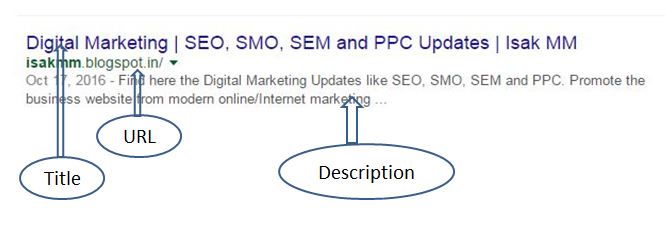Introduction
So you’ve started a blog posts.
It’s an excellent way to begin increasing traffic, attracting new clients, and increasing brand recognition.
So I have a bad news for you.
You won’t make much progress until your blog posts rate high in Google search. Understanding SEO is important for making the website stand out. There are many reasons where you don’t get expected results from SEO.
To do so, you must employ some tried-and-true strategies for increasing your Google score.
There are some bad SEO practices which will decrease your Google ranking. This is your step-by-step guide to increasing the visibility of your blog posts.
Let’s get started!
10 tips to make your SEO blog posts rank higher on Google
1.Begin by conducting keyword analysis

Google is said to handle over 70,000 search requests per second. Isn’t it incredible?
If you wish to rise above the SERP clutter and outrank your rivals, you must target the unique keywords and phrases that your future clients are looking for. If not, how can they find your material and website?
Start by using a keyword analysis tool. Ahrefs and Google Keyword Planner, for example, have information about what people are looking for and how famous such keywords are.
Google Trends will also show you which keywords are common at any given time. If you see the searches for a certain keyword are slowly dwindling over time, you know it’s obviously not the best keyword to target for your marketing. Rising patterns, on the other hand, are the polar opposite.
If you ever run out of keyword ideas, look at the rivals for inspiration. Use competitive intelligence tools to determine which keywords their domains are currently ranking with. Consider using these keywords as well if they are important to your market.
2. Use headings to your advantage.

Headers assist Google’s web crawlers in understanding the blog posts and their pages.
Consider the crawlers to be readers who are skimming your blog. Your H1 should include an outline of what your essay would cover. The H2s, H3s, and H4s then break down the subtopics inside the piece.
As a result, the sub-headers should represent the substance of the body and contain high-intent keywords. You have a lot better chance of rating on the SERP if you choose the correct keywords, which are those that your target audience is using.
3. Write for people, not for search engines.
For all of these SEO rules, it’s easy to lose sight of the fact that when a person searches on Google, they’re searching for a response. Performing high-quality blog posts is the perfect way to increase your ranking chances.
What does it imply? Comprehensive responses, scannable pieces, well-organized sub-headers, and visual aids
Keep in mind the buyer personas, as well as their motives, threats, and interests. It is also important to choose subjects that will pique the interest of future clients and answer their pain points.
4. Boost your content

Google’s search algorithm is continually evolving.
To ensure that you remain at the top of the search results list, you must look past today’s methods and concentrate on long-term plans that will keep you at the top of search results.
The one constant in the ever-changing world of SEO is that Google will still choose in-depth, high-quality content over low-quality content.
5. Keywords should be used in the meta overview

Can you have meta explanations in your posts? If you said “no,” you’re obviously not giving your article as much attention as it deserves. Let’s look at why they’re important.
We’ve already discussed a few of the ways a blog post should interact with Google: sub-headers, keywords, and snippets. That, though, is not an exhaustive list.
Google also crawls meta explanations to assess search rankings. Meta explanations are the one- to three-sentence definitions that appear under a result’s title.
Use meta explanations to summarise the blog posts content, and remember to keep it brief.
Use of one and two keywords.
Get it enticing. After all, there will be other blog posts close to yours, so you’ll want your definition to stand out.
Most content management systems (CMS) have meta-definition boxes, so you won’t have to look hard to find one.
6. Link to authoritative websites.

Don’t be shy to have external links when you write your blog posts.
Linking to reputable blogs not only provides extra reading content for blog readers to extend their expertise, but it also tells search engines that you’ve done your homework.
Nothing reinforces a blog posts like figures from authoritative websites backed up with analysis. Stats that are compelling help you create a more persuasive and realistic case that can help you win the confidence of your readers.
7. Include a link to another article on your website

Linking to other sites or blog entries on your website aids search engines in the creation of a correct sitemap. It also assists your viewers in discovering more about your material and getting to know you as a reliable and authoritative source of knowledge.
Internal connections to other useful material hold readers on the web longer, reducing bounce rate and increasing conversion opportunities. Isn’t that what it all boils down to?
Using natural language for your anchor text when connecting to some sites on your website or even external sources. Using specific keywords that give readers a sense of what they can see as they click on the hyperlink rather than spammy or repetitive calls to action.
Never force-feed links to your most popular web pages, featured brands, or on-sale pieces. Have ties that complement the points made in your articles and are naturally related to the subject matter.
8. Decrease the bounce rate

The bounce rate is the number of users who leave the web after only visiting one item.
Your bounce rate can be seen in Google Analytics data. The smaller your bounce rate, the higher your page ranks on Google. In essence, lower bounce rates signify to Google that people find the website fascinating and, as a result, it merits a higher ranking.
The overall bounce rate for blogs is estimated to be between 65 and 90 percent.
Displaying a pop-up of downloaded content as a user is about to abandon the website is a smart way to reduce the bounce rate.
9. CTR in SERPs should be increased.

Higher CTR Google search results are being moved up the SERPs. But how do you ensure that your blog posts will have a strong CTR?
Make an effort to produce featured snippets.
Featured snippets are search results that appear on top of Google’s organic results, under the ads in a box.
To achieve featured snippets, you can create compilations of various types, such as best equipment, best hotels, or best restaurants for a New Year’s Eve picnic. Other actionable opportunities to win featured snippets can be found here.
Create a memorable word: Use sentimental adjectives to spice up the names. In addition, numbers in headings attract a lot of scrutinise.
10. Create a plan for link building

Link building is important for improving your search ranking.
Why is this so? Consider search results to be a race in which the winners get the most votes. Each webpage that links back to you is considered a vote for your website, which increases the trustworthiness of your content in Google’s eyes. As a result, you will go up in the rankings.
As a result, it’s a smart idea to write articles that other blogs or magazines will like to connect to from their own. Include high-value assets in your blog posts, such as original data and opinion leaders, to make your website’s blog posts more linkable.
Conclusion
If you want your blog posts to rate higher on Google, you’ll have to put in some effort.
You will achieve huge SEO success by implementing the techniques and methods I’ve suggested in this essay.
It will take longer to see results and the rankings will gradually rise rather than suddenly rising to the top of page one. However, you can review your impression count on Google Search Console on a regular basis and see if you’re on the right track, or you can use apps like Serpbook to track your rankings.
These tactics are guaranteed to boost your rankings and maximize the volume of traffic to your website.
This will result in increased consumption, earnings, and benefit.
Author: Sanu James Saji
Sanu is a content writer who specializes in SEO, Digital Marketing, Web Development, PPC and SMM.
